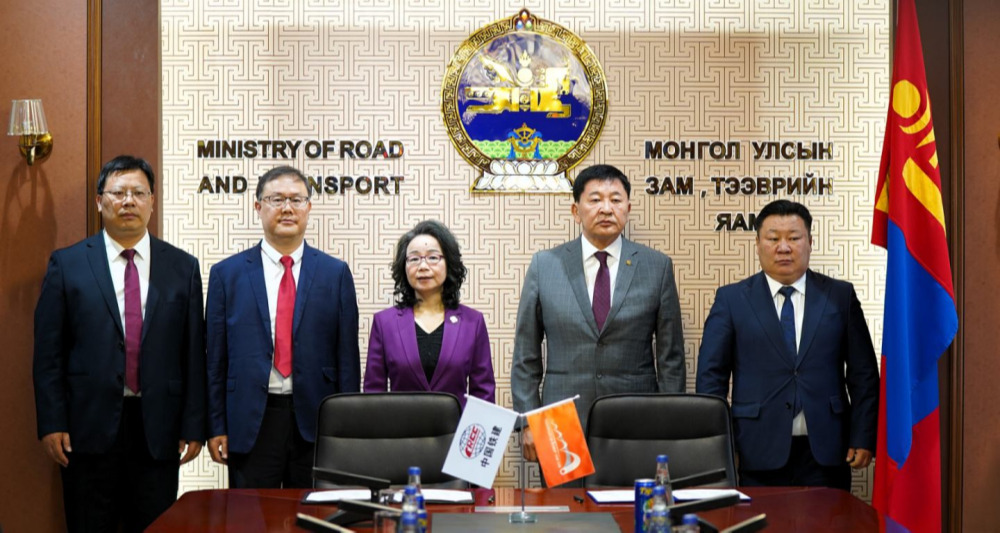
T. Byambanaran
Ulaanbaatar, 9 June 2025 — A signing ceremony was held today at the Ministry of Roads and Transport for the enterprise agreement on the construction of the Gashuunsukhait–Gantsmod cross-border railway. This agreement marks a significant milestone in developing a new railway link connecting Mongolia and China through the Gashuunsukhait–Gantsmod border crossing.
The ceremony was attended by B. Delgersaikhan, Minister of Roads and Transport and Member of the Government of Mongolia; Kh. Itgelt, Head of the Railway and Maritime Transport Policy and Coordination Department at the Ministry; B. Dugerjav, CEO of Tavantolgoi Railway LLC; alongside other senior officials and representatives from relevant organizations.
Representing the People’s Republic of China were H.E. Shen Minjuan, Ambassador to Mongolia; Liu Jingzhi, Economic and Commercial Counselor at the Chinese Embassy in Mongolia; Cao Yue, Secretary of the Economic and Commercial Office of the Embassy; Li Guoqiang, Deputy General Manager of China Railway Construction Bridge Engineering Bureau Group Co., Ltd.; and Xie Xiaoche, General Manager of China Railway Construction Bridge Engineering Group International Co., Ltd.
The Gashuunsukhait–Gantsmod cross-border railway will stretch 32.6 kilometers in total. It is classified as a first-class railway and will feature dual tracks accommodating both broad gauge (1,520 mm) and standard gauge (1,435 mm). Of the total length, the main railway line will cover 19.5 kilometers and include single and double-track bridge structures ranging from 8 to 31 meters in height. The railway is designed to handle an annual freight capacity of 30 million tons on the broad-gauge track and 10 million tons on the standard-gauge track.
The construction contract was awarded to the China Railway Construction Bridge Engineering Bureau Group Co., Ltd., a subsidiary of China Railway Construction Corporation (CRCC). The parties finalized and signed the project execution agreement. Construction is scheduled to commence jointly on 15 June 2025, starting with the drilling of the first bridge foundation pile. The project is planned to be completed and commissioned within 24 months.
The project’s implementation is expected to increase Mongolia’s coal exports from 83 million tons to 165 million tons, boost export revenues by USD 1.5 billion, and support raising the country’s GDP per capita to USD 10,000.
Economic estimates also suggest that transportation costs will be reduced by 2 to 2.5 times, resulting in an increase of transportation revenues by USD 300 million. The project is expected to create 200 permanent and 800 temporary new jobs, contributing significantly to regional development.
This railway project, which will connect Mongolia and China via their second border crossing by rail for the first time in 70 years since 1955, opens a new chapter in the historic and strategic cooperation between the two countries.